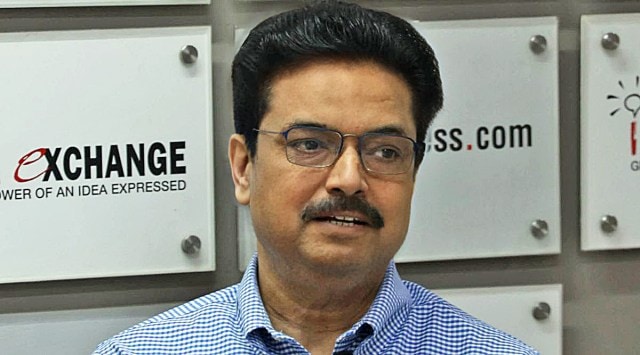CBSE-affiliated schools students have an edge in DU admissions: V-C Yogesh Singh at Idea Exchange
Vice Chancellor of Delhi University, Yogesh Singh said they decided to follow CUET as there is a disparity amongst education boards across the country.
 Yogesh Singh said the use of the NCERT curriculum for CUET does give students from CBSE-affiliated schools an edge. (Express Photo By Amit Mehra)
Yogesh Singh said the use of the NCERT curriculum for CUET does give students from CBSE-affiliated schools an edge. (Express Photo By Amit Mehra)CBSE students have an “inherent advantage” in the Common University Entrance Test (CUET) based admissions followed by DU, but more options in question papers may help state board students as well, varsity Vice-Chancellor Yogesh Singh said Tuesday.
Singh was speaking at an Idea Exchange session at The Indian Express. As Delhi University works on winding up its first cycle of CUET-based admissions after years of admitting students on the basis of class 12 marks, Singh said the use of the NCERT curriculum for CUET does give students from CBSE-affiliated schools an edge.
“CBSE has some inherent advantage because curriculum CUET questions are from the NCERT curriculum. There are many boards that follow other curriculums. But we have given choices also. Like out of the 70 questions you can attempt 60 I think, I cannot remember the exact number. There were some options so that they can skip some questions. But now NTA and UGC should think about it and if they can provide more options which can be more beneficial for the state board students,” he added.
Speaking about DU’s adoption of CUET, he said, “The first and foremost reason [for introducing CUET] was disparity amongst the boards. As per data, we found that some boards are very lenient and some are very strict… But they are not wrong. They have their own policies and their own systems for assessing their students, their evaluation parameters are very different. But when we are admitting students across our country, without doing any normalisation or something to them then some students who come from a very strict board are not getting a fair chance in the whole system.”
He said that though, like in previous years, students from CBSE continue to get the lion’s share of the seats, the change in ordering among other boards is indicative of some changes.
“Out of the 55,000 students finally admitted as of today [November 15]… CBSE is 47,790 students. It is reasonable because CBSE isn’t just Delhi, it’s the entire country. Mostly, all good schools across the country are affiliated with CBSE. The second is the ICSE board with around 2000 students. Then Bihar board is third with 1280. Otherwise, in the previous system, students from the Bihar board were not getting a fair chance. It’s quite a strict board in terms of marks,” he said.
He added there were 1222 admissions from the UP board, 765 from the Rajasthan board, 436 from the Haryana board, 350 from the Kerala board, 312 from Madhya Pradesh, 278 from Jammu and Kashmir board, and 153 from the Jharkhand board.
“In the earlier system also we were having very few students from state boards compared to CBSE. But even though the numbers are not there, the ordering is very indicative. We are getting representation from the neighbouring states around Delhi, which should happen normally. But in the previous years, if there were lenient boards – and there were cases, one year one board, another year another board — so many students were coming from that board only. That problem has been eliminated now,” he said.
- 01
- 02
- 03
- 04
- 05































